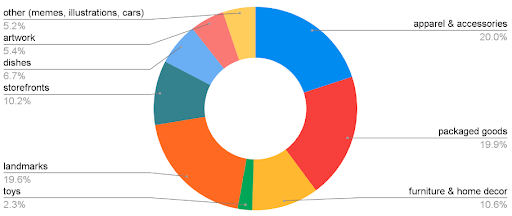KDS - Google Universal Image Embedding
- Competition End time: 2022-10-17
- Submission Format: notebook <= 9h
Key Features
- No training data provided.
- Ensemble cannot easily work. thread
Evaluation
mean Precision @ 5 metric + a small modification to avoid penalizing queries with fewer than 5 expected index images.
\[mP@5 = \frac{1}{Q} \sum_{q=1}^Q \frac{1}{\min(n_q, 5)} \sum_{j=1}^{\min(n_q, 5)} rel_q(j)\]- embedding dimension should be <= 64
- compatible with TensorFlow 2.6.4 or Pytorch 1.11.0
The host will use k-NN (k=5) to lookup for each test sample, using the Euclidean distance between test and index embeddings.
Data
No training data provided. Here is the distribution of test data.

- External data thread: https://www.kaggle.com/competitions/google-universal-image-embedding/discussion/337384
Great Notebooks
-
CLIP-TF-Train-Example
- CLIP + Arcface + TPU training.
-
GCVIT
- Global Context Vision Transformer
-
Understand Comp Domain and ImageNet 21k Labels
- Understanding comp domain and labels
Solutions
-
1st place solution
- Using pre-trained weights w/o training or fine-tuning first.
- CLIP Github
- ArcFace
- Add datasets to training list iteratively to save time and maintain good performance
- unfreeze the backbone after linear head is well trained, so we don’t need to worry about the random linear head would affect the backbone weights
- use 10 times lower initial learning rate.
- Easy to get overfit and linear projection weights jumped sharply.
- So freeze linear head to train and add dropout to fully connection layer.
- Clever ensemble to overcome different F(C, X) issues
- resolution 224 + resolution 280
- LAION-5B CLIP Model blog
-
2nd place solution
- dynamic margin
- stratified learning rate when training non-backbone part.
- 4th place solution
- 5th place solution
- The rest thread